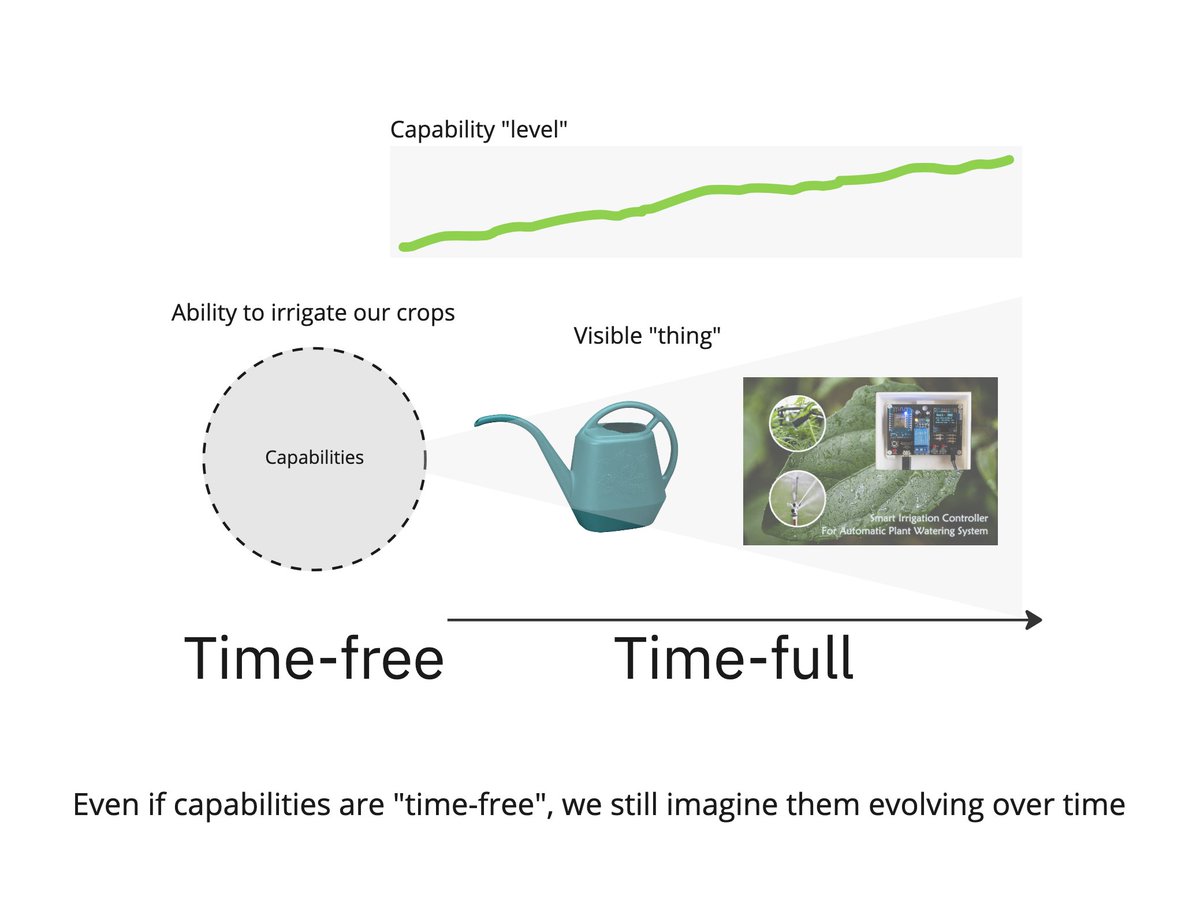(1/n) product developer tip:
You have to build a sense for when you are juggling too many dependencies, too much coupling, too many drivers, not enough floats. A self-inflicted wicked problem.
The trouble is that this is hard to teach/learn....
You have to build a sense for when you are juggling too many dependencies, too much coupling, too many drivers, not enough floats. A self-inflicted wicked problem.
The trouble is that this is hard to teach/learn....
(2/n)
...when you haven’t seen enough things go wrong.
It is natural to be over confident that you can somehow thread the needle, and brute force the optimization problem. If you adjust the levers just right, things will work!
Do this enough times, and fail, and you...
...when you haven’t seen enough things go wrong.
It is natural to be over confident that you can somehow thread the needle, and brute force the optimization problem. If you adjust the levers just right, things will work!
Do this enough times, and fail, and you...
(3/n)
...build the ability to sense the warning signs. The instinct.
But you need to be in the thick of it. Observing — from a distance — a team in the throes, and you are liable to believe that the levers could have been moved just so.
But they can’t. Alternately...
...build the ability to sense the warning signs. The instinct.
But you need to be in the thick of it. Observing — from a distance — a team in the throes, and you are liable to believe that the levers could have been moved just so.
But they can’t. Alternately...
(4/n)
...you can use any number of forcing functions (e.g. timeboxes, batch size limits, “show work early and often”, etc.) Anything that that gets you out of your head, and exposes the effort for what it is quickly.
This works, except for that pesky problem about...
...you can use any number of forcing functions (e.g. timeboxes, batch size limits, “show work early and often”, etc.) Anything that that gets you out of your head, and exposes the effort for what it is quickly.
This works, except for that pesky problem about...
(5/n)
...the peanut gallery not knowing. They will still wonder why you aren’t able to brute force the problem, juggle 12 balls, and oh.... a mobile app.
The classic battle tension between one group seeing complicated, and the other group seeing complex
So what’s the trick?...
...the peanut gallery not knowing. They will still wonder why you aren’t able to brute force the problem, juggle 12 balls, and oh.... a mobile app.
The classic battle tension between one group seeing complicated, and the other group seeing complex
So what’s the trick?...
(6/n)
Your only option if you face doubters (“we can brute force this”) who need X,Y, and Z is to surface their assumptions and constraints, and then plot a way through it progressively to expose their error.
Don’t discount them. Sequence them...
Your only option if you face doubters (“we can brute force this”) who need X,Y, and Z is to surface their assumptions and constraints, and then plot a way through it progressively to expose their error.
Don’t discount them. Sequence them...
(7/n)
If you are early in your career and this makes no sense, try to stay very aware between the difference between a “flow state” (good kind of challenge), and the my-head-hurts-this-feels-like-a-maze-with-no-solution. It’s a signal.
Work small. Work together. And stay aware.
If you are early in your career and this makes no sense, try to stay very aware between the difference between a “flow state” (good kind of challenge), and the my-head-hurts-this-feels-like-a-maze-with-no-solution. It’s a signal.
Work small. Work together. And stay aware.
(8/n)
When I work with ppl early in their career, you see this skill grow over time. It is possible. The assumption mapping exercise they do on Year 1 will look very different from the map they do on Year 2 or 3.
When I work with ppl early in their career, you see this skill grow over time. It is possible. The assumption mapping exercise they do on Year 1 will look very different from the map they do on Year 2 or 3.
(9/n)
Finally, the best thing to do is to have a discussion and get things out of your head. Here are four posts I’ve written about this topic...
Post 4: cutlefish.substack.com/p/tbm-3853-ass…
Post 3: cutlefish.substack.com/p/tbm-2453-map…
Post 2: cutlefish.substack.com/p/tbm-2052-que…
Post 1: cutlefish.substack.com/p/tbm-1953-dri…
Finally, the best thing to do is to have a discussion and get things out of your head. Here are four posts I’ve written about this topic...
Post 4: cutlefish.substack.com/p/tbm-3853-ass…
Post 3: cutlefish.substack.com/p/tbm-2453-map…
Post 2: cutlefish.substack.com/p/tbm-2052-que…
Post 1: cutlefish.substack.com/p/tbm-1953-dri…
• • •
Missing some Tweet in this thread? You can try to
force a refresh















